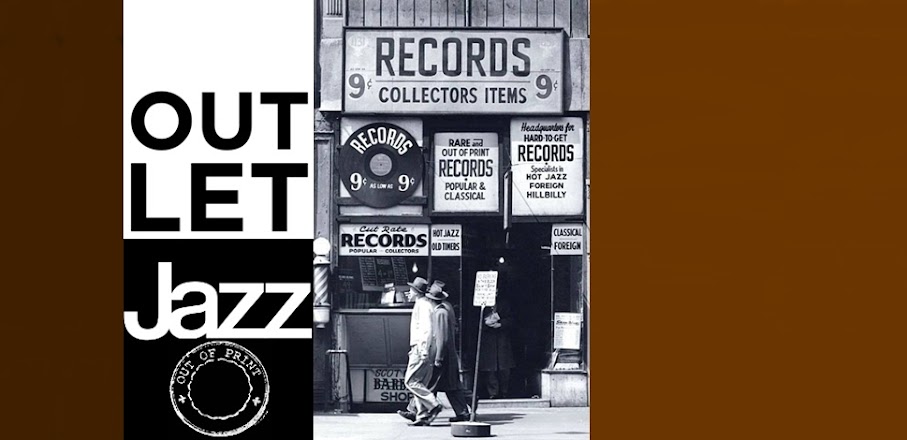Stan Levey was one of the leading drummers of his generation who was not only involved in the formative years of bebop, but was accepted as one of its most important drummers, alongside greats like Kenny Clarke and Max Roach. Stan was a major influence in what was called "west coast jazz" or the "cool school". His crisp, melodic style continued to have more in common with bop than cool, and he inspired every group he ever played in.
Of the 2000 some recordings Stan was featured on, he surprisingly only appeared as leader on only a handful. The best of those rare sessions was his 1957 Bethlehem Records release Grand Stan cut in the midst of his stint with Howard Rumsey’s Lighthouse All-Stars and featuring accompaniment from Sonny Clark (pianist), Conte Condoli (trumpet), Richie Kamuca (tenor saxophone) and Leroy Vinnegar (bass).
A beautiful west coast jazz program, Levey leaves the players plenty of room to more than show their stuff throughout especially trombonist Frank Rosolino who manages to consistently steal the show. The formidable 8-song set is highlighted by "Angel Cake", "Hit That Thing" and "Blues At Sunrise". *ccd.pl review*
Stan Levey was a significant bebop drummer who brought stimulation and innovation to such bands as the Gillespie/Parker Quintet (1945-46), the Stan Kenton Band (1952-54) and the Lighthouse All-Stars ( 1954-60) where he was anchoring the rhythm section at the time of this recording.
In this 1957 outing called Grand Stan were three Stan Kenton Band alumni, trumpeter Conte Candoli, tenor sax stalwart Richie Kamuca, and trombone virtuoso Frank Rosolino. Joining this cohort was the still unheralded pianist Sonny Clark who later participated in a seminal release with Buddy De Franco and another with guitarist Grant Green. Finally bassist Leroy Vinnegar who was highly sought after on the West Coast for his big toned walking bass style.
Benefiting from arrangements by Marty Paich, Bob Cooper, Bill Holman and Sonny Clark, the band blows up a storm through a collection of popular standards and original compositions from Cooper, Holman and Clark.
Side A opens with "Yesterdays" which was written by Jerome Kern & Otto Harbach in 1933 for the musical Roberta. In an arrangement by Marty Paich that stretches the construct of the original melody, the number becomes a feature for trombonist Frank Rosolino. He powers through his long solo in his well-known staccato style, with Vinnegar’s pulsing bass in noticeable support.
Another Kern number is "Why Do I Love You" written in conjunction with Oscar Hammerstein II, and it is again arranged by Paich to feature the pianist Sonny Clark. Done at a super fast tempo, Clark demonstrates he can swing with ease and yet stay within the framework of the number. Levey’s drumming is a propulsive boost to the arrangement.
This side closes with the title track "Grand Stan" which was written by Bob Cooper another Kenton alumnus. Designed in a medium tempo, it has a boppish line and chord progressions that give the soloists a chance to offer several easy-going choruses. All the front line jump at the chance to be heard, which they do to perfection.
Side B starts with a Bill Holman original "Hit That Thing". In this up tempo gem, there are sensational opening choruses from Richie Kamuca on tenor sax, Conte Candoli on trumpet, and Rosolino on trombone. However the majority of the time on this track is taken up with a lengthy but well executed drum solo from Stan Levey. Given the fantastic stick work exhibited in his drum solo, it is hard to imagine that Levey was entirely self-taught. Not only that, he played left-handed even though he was naturally right-handed. His first drum influence was Chick Webb, but later Max Roach had the greatest impact on his development.
A 1946 B-movie entitled The Time, The Place and The Girl became recognized for only one thing. That was the Leo Robin/Arthur Schwartz song "A Gal In Calico". The number has found a place in jazz repertoires and the Bill Holman arrangement here will help cement that reputation. Opening with tight voicing of the melody among the front line, the players use that as the jumping off point to deliver a series of choruses that demonstrate some compelling and prolific soloing. All of which is a worthy model of how a simple number can become a jazz showcase.
Bob Cooper’s original number "Tiny’s Tune" closes Side B. In this head arrangement there are a number of lengthy exciting choruses strung together starting with a single note winner from Sonny Clark. This is followed by turns from Kamuca, Candoli and Rosolino each of which shows a fierce drive and a sense of vitality they brought to the recording. *Pierre Giroux*
1 - Yesterdays
(Harbach, Kern)
2 - Angel Cake
(Clark)
3 - Why Do I Love You
(Hammerstein II, Kern)
4 - Grand Stan
(Cooper)
5 - Hit That Thing
(Holman)
6 - Blues At Sunrise
(Clark)
7 - A Gal In Calico
(Schwartz, Robin)
8 - Tiny's Tune
(Cooper)
Conte Candoli (trumpet), Frank Rosolino (trombone), Richie Kamuca (tenor sax), Sonny Clark (piano), Leroy Vinnegar (bass), Stan Levey (drums).
Recorded in Hollywood, California, November 1956.


https://1fichier.com/?pthevejf4xpezz6r273v
ReplyDeleteThank you very much, blbs! What a great band!!!
ReplyDeleteThank you very much
ReplyDeleteThanks again!
ReplyDeleteMuchas gracias,
ReplyDeleteGreat Richie Kamuca! Thanks, blbs.
ReplyDelete